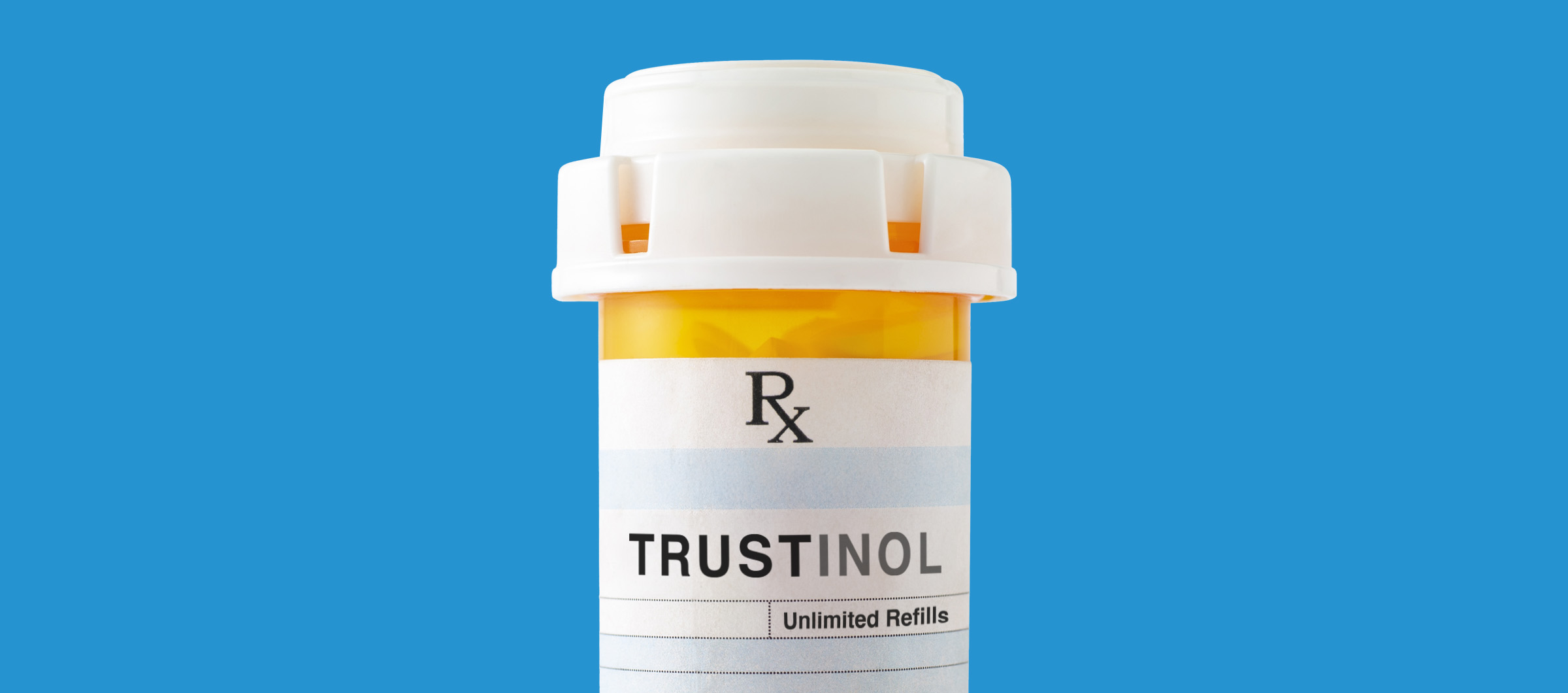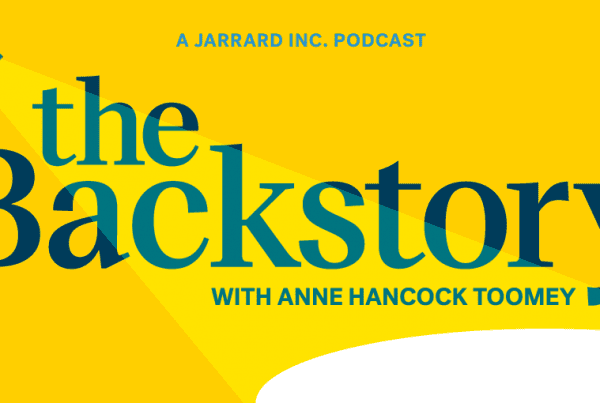The Big Story: Walgreens CEO touts a ‘leverageable asset’: Trust
“Tim Wentworth, CEO of Walgreens, acknowledged the company’s recent store closures in a Jan. 8 interview with CNBC. But he said the company has a ‘leverageable asset’ that will set the foundation for its health services business, well beyond its brick-and-mortar storefronts: consumer trust.”
A prescription for healthcare success and other big themes from San Francisco
Before settling into a fireside chat at the JP Morgan Healthcare Conference last week, the CEO of Walgreens shared two insights into what is needed to continue evolving his 8,600 pharmacies into a healthcare services company.
Money? Sure. Expansion? Yes. Fixing operations? Absolutely.
But the real asset? Trust.
Consumer trust, he said – that almost mystical but compelling sense of reliability and credibility – is a “leverageable asset” and a key driver of growth for Walgreens and its partners. It’s not the most poetic language, but it’s the right words for an investor conference.
“When a Walgreens pharmacist calls you and says, ‘Hey, your health plan would cover a shot for you, would you like to come into the store and we can give it to you?’ You are four to five times more likely to respond to that than if someone from the insurance company calls you and tells you the same thing,” Tim Wentworth told CNBC‘s Jim Cramer.
When healthcare consumers have a trusted relationship with a provider, that precious dynamic can generate more engagement, additional transactions, and deeper loyalty. When deployed well and respectfully, a trusted relationship feeds a virtuous circle that protects and builds market share and improves patient health.
His second point? How trust is built. It’s not flashy or fast. It’s built slowly, little by little, through the repeated personal experiences individuals have with the people or systems representing the brand. It follows an investment of money and time in systems and culture building, and in dogged consistency. Water on a rock.
Walgreens is a healthcare services business, which, Wentworth noted, provided eight million vaccines last year from “the back of the store.”
“That’s not just putting pills in bottles, that’s people touching people — 85,000 of our people touching people every day, 10 million people a day that walk in our store,” he said. Yes, he said “people touching people.”
As smart investors will tell you, there’s no place for “trust” in an Excel spreadsheet, but it’s a resource with a real ROI.
Providers of care remain the single most trusted voice in the healthcare industry compared, say, to insurance and pharmaceutical companies, and despite the national erosion of trust overall by everyone in everything. As Walgreens might script, there’s a lot of leverage here.
Other insights from last week’s gathering of healthcare leaders in San Francisco?
Hollie Adams and Ellis Metz wandered those crowded spaces for us and picked up on increased energy and tempered optimism compared to last year. As Axios put it, “More than $10 billion in deal announcements pretty much set the tone for the week.” That momentum includes an increasing number of successful exits for PE- backed companies over the past couple of months.
Here are four themes – plus a few “Best Ofs” – selected by Adams and Metz. It’s clear how trust plays a decisive role in each, too.
– David Jarrard
AI for MD, but maybe not (yet) for thee.
So far, 2023’s healthcare conference rule still applies: You can’t have a conference without discussing AI. But today’s conversation has developed some nuance. The focus has shifted from broad speculation and fear about what AI could, should or will do into a more grounded conversation around the way algorithms and machine learning are capable of making physicians’ daily jobs easier. AI-assisted diagnostics, transient scribing and EMR support seem to be gaining real-time traction in real-world applications, leading to some real-big investment.
Trust Element: Patients have to know when AI is being used and providers must be very clear on how it’s being used.
The latest definition of value: cost containment.
Healthcare leaders are no closer to defining value-based care than a year ago. But there is a new emphasis. Many we spoke with felt that cost-containment platforms, tackling things like workforce efficiency, rev cycle management and resource optimization, will be the industry’s next best attempt to shift to value. Mentions of cost containment outnumbered “population health management” by an estimated 7-to-1. That number is made up, but it reflects the momentum.
Trust Element: Be open about how new or evolved care models, service line adjustments and any associated cost-containment efforts are being implemented and what they mean for patients.
The buying days are back — with discernment.
While leaders with actual deals in their pipeline were rarer than the ones who said they have plans to buy in 2024, the expectation is clear: It’s time to spend. Pick your metaphor: dry powder on sidelines, sprinters waiting at the starting line, etc. But this deal market (and maybe all future markets) won’t look like 2019 – 2021. Expect more rational multiples. Expect longer diligence processes. Expect deals that make sound strategic sense or that fit more neatly into a thesis, rather than flavor-of-the-month head-turners. In terms of sectors, we heard most often about home care and hospice, behavioral health (especially mental health), and women’s health. The more tech-enabled, the better.
Trust Element: With recruitment and retention higher priorities than ever before, providers can’t neglect the internal communications and culture-building components of growth. New staff need to know who they’re joining and why they should commit to staying with you for the long haul. Existing staff need to feel confident that the organization is staying true to the values that attracted them in the first place.
As we’ve said before: No provider’s reputation is safe.
All those media stories about quality declines or closures after private equity enters the picture, or how certain populations are being neglected by their local behemoth health system, are catching people’s attention. At this point, provider organizations of every model and financial structure are feeling equal heat. Everyone needs to proactively own and tell their story. PE sponsors need to start claiming wins and touting quality where they can. Not-for-profit health systems need to start documenting and promoting their community benefit commitments.
Trust Element: It’s pretty simple. Explaining how your investments, operational changes, community engagement and more are contributing to better care and fulfilling your mission is THE way to build trust. Back room deals breed suspicion. Transparency builds trust. Whenever possible, use that magical combination of storytelling and data to back things up.
Now, for a few JPM24 superlatives…
- Best reception venue: The Chandran Gallery (Sheppard Mullin, Bernstein Private Wealth Management, Health Management Associates)
- Best daytime hangout spot: The Press Club (Holland & Knight, Gallagher, LBMC)
- Best almond croissants: The Cavalier (Barnes & Thornburg)
- Best office views: Audax
- Best lunch: Mastro’s Steakhouse (Bass Berry & Sims)
- Best one-word descriptor for the 2024 outlook: “Weird.” (Anonymous)
Contributors: David Shifrin, Emme Nelson Baxter
Image Credit: Shannon Threadgill



